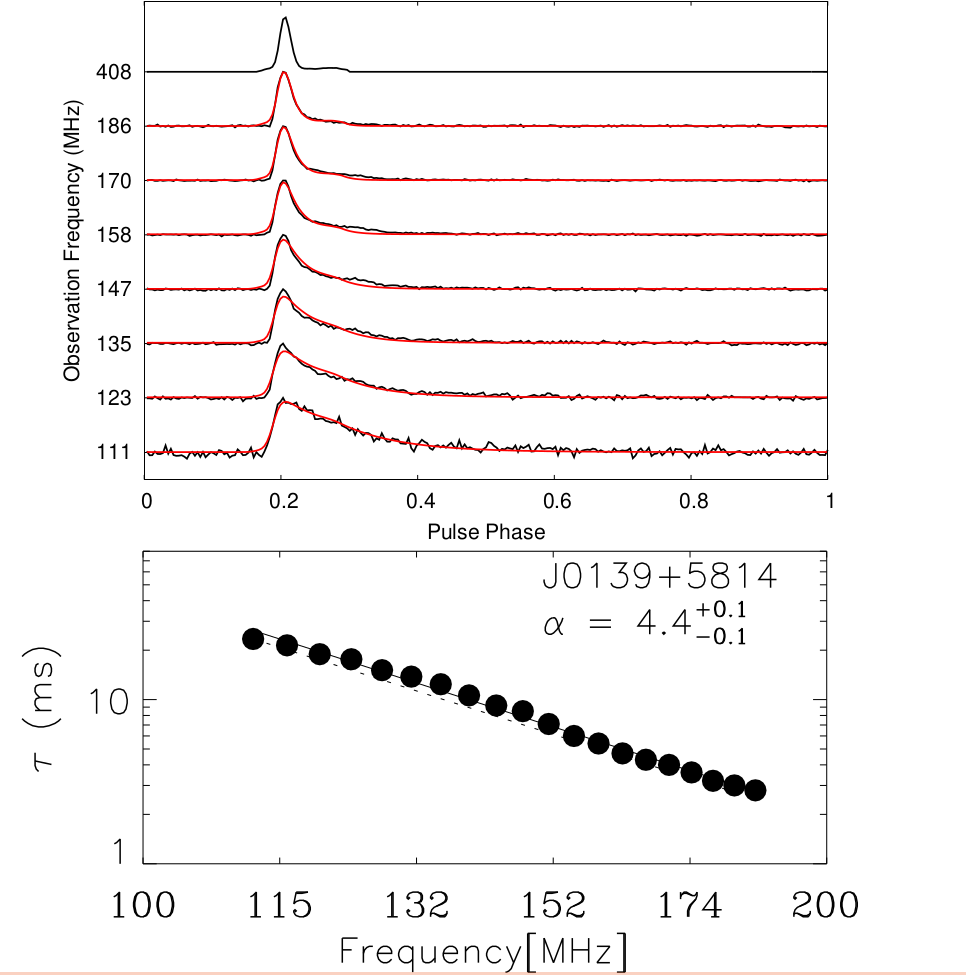Daily Image
27-08-2019Pulsars as tools to study turbulence in the interstellar medium
| Submitter: | M. A. Krishnakumar and Yogesh Maan |
| Description: | Pulsed radio signals from pulsars get affected by the ionized interstellar medium (IISM) in a variety of ways. One such effect is broadening of an intrinsically narrow pulsed signal due to scattering in the IISM. The pulse-broadening appears in the form of an exponential decay tail in the otherwise narrow pulse profiles. The frequency evolution of this pulse broadening is a probe of the turbulence characteristics of the IISM. The above scatter-broadening increases very sharply as we go towards lower observing frequencies. The upper panel of the accompanied figure shows pulse profiles of pulsar J0139+5814 at a number of LOFAR-HBA frequencies and the scattering tail is much more pronounced at lower frequencies. The lower panel shows the measured scatter-broadening as a function of frequency. For some nearby pulsars, this effect is detectable only at frequencies below 200 MHz, i.e., at frequencies accessible by only the low-frequency radio telescopes such as LOFAR, LWA, MWA, etc. Recently, we exploited the wide-bandwidths of LOFAR and LWA to study the interstellar scattering and turbulence towards a sample of 29 nearby pulsars. One of the main findings from our study is that for many pulsars we see deviation from the generally expected Kolmogorov model of turbulence in the IISM. Moreover, to study statistical relations with other observable parameters, the measured scatter-broadening is conventionally scaled to a reference frequency of 1 GHz. We show that a more optimum reference frequency for such studies for our sample of nearby pulsars would be some 200-300 MHz. This aspect might also suggest that the rate at which scatter-broadening changes with frequency might itself depend on the observing frequency. While substantiating the above findings certainly warrants new multi-frequency probes, our study has increased the number of nearby pulsars studied in this regard by about 60%. More details can be found in the recently published paper: Krishnakumar, Maan et al. (2019, ApJ, 878, 130K). |
| Copyright: | M. A. Krishnakumar and Yogesh Maan |
| Tweet |  |
